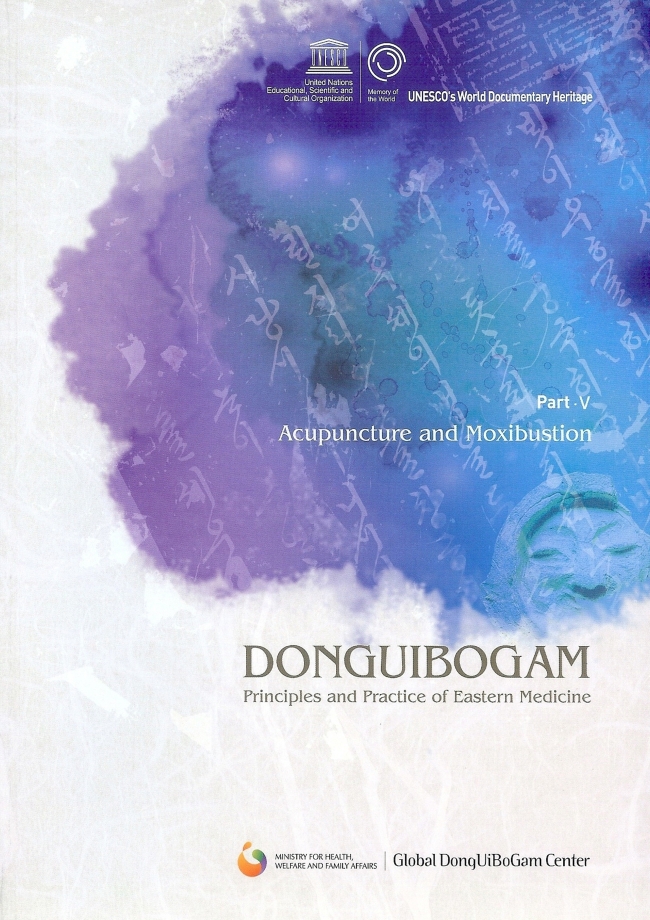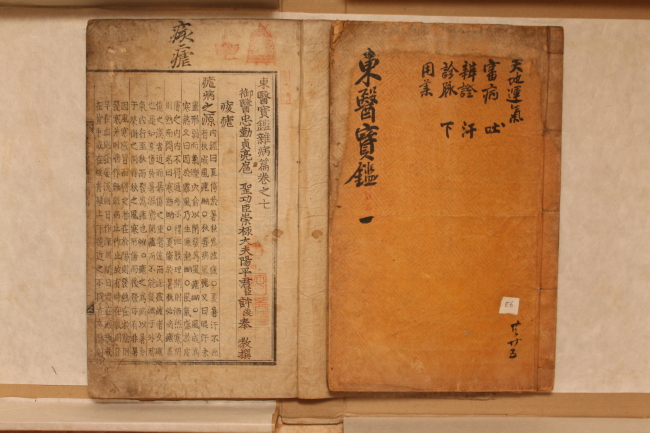
우리 민족 최고의 의서(醫書)이자 유네스코 세계기록유산인 허준의 '동의보감'(東醫寶鑑) 영어번역본이 나온다.
한국한의학연구원 동의보감 기념사업단은 올해 '동의보감' 발간 400주년을 맞아 '동의보감' 영역본을 완간한다.
보건복지부의 지원을 받아 2008년 번역 작업에 착수한 지 5년 만에 거두는 결실이다.
사업단은 25권 25책으로 이뤄진 '동의보감' 가운데 본문(총 23권)에 대한 번역을 끝마쳤으며 이달 중에 총 8권의 영역본을 발간한다.
2008년 영역 작업에 착수한 사업단은 그해 동의보감 영문 개설서를 펴낸 데 이어 2009년 본격적인 번역 작업에 들어가 지난해 말까지 '동의보감' 23권에 대한 번역을 완료했다. 사업단의 이정화 박사는 6일 현재 편집 작업을 진행 중이라고 전했다.
사업단은 '동의보감' 발간 400주년을 기념해 오는 9월 열리는 산청 세계 전통의 약엑스포 개막 이전에 목록집인 나머지 2권에 대한 번역을 끝마친다. 이어 색인, 교정 작업을 거쳐 완성본(총 9권 예정)을 내놓을 계획이다.
번역 작업에는 경희대 한의대를 주축으로 한자와 영어에 모두 능통한 연구자들 과 한의학•한문 전문가들, 원어민 등이 참가했다. 사업단은 한국학을 연구하는 해외 대학 도서관 등에 '동의보감' 영역본을 배포할 계획이다.
'동의보감' 영역본 발간은 한국 한의학을 대표하는 서적이 처음으로 영어로 번역됐다는 점에서 기념비적인 일로 평가된다.
영역 사업 연구 책임자인 김남일 경희대 한의대 학장은 "한국 한의학을 대표하는 서적인 '동의보감'이 영어로 번역됨으로써 한국 한의학을 세계화하는데 기초 자료를 확보하게 됐다"고 의미를 부여했다.
김 학장은 또 "'동의보감'에는 의학적인 내용뿐 아니라 생활•문화적인 요소, 철학, 역사 등 학술적인 내용도 들어있다"면서 영역본 발간으로 "한국의 학술 문화를 해외에 보여줄 수 있는 기초 자료를 확보하게 됐으며 한류 열풍을 이어가는데도 도움이 될 것"이라고 내다봤다.
안대회 성균관대 한문학과 교수는 "중국은 오래전부터 중의학의 세계화를 위해 한문으로 된 의서들을 영어, 프랑스어 등으로 번역하는 데 큰 노력을 기울여왔다"고 말했다.
안 교수는 "한의학의 중요한 개념들이 중국에 의해 세계에 알려지고 학계에 정착되면 한국 한의학의 가치와 정체성, 독자성이 세계적으로 공인받기 어려워진다"면 서 "이번 '동의보감' 영역본 발간은 한국 한의학의 독자성을 전 세계에 내보일 수 있게 됐다는 점에서 굉장히 큰 의미가 있다"고 평가했다.
'동의보감'은 선조와 광해군의 주치의였던 허준(1539-1615)이 우리 민족의 전통 의학과 동아시아 의학을 집대성해 편찬한 의학서. 허준은 선조의 명을 받아 1610년 집필을 완료했으며 책은 3년 뒤인 1613년 간행됐다.
'동의보감'은 동아시아 전통의학의 전범(典範)이 됐으며 지금까지도 많은 영향을 끼치고 있다.
김 학장은 "'동의보감'은 한국, 중국, 일본은 물론 티베트, 베트남에 이르는 동 아시아 전통의학을 체계화했으며 중국, 일본 등에 많은 영향을 미쳤다"면서 "현재 국내 한의사 중 80-90%가 여전히 '동의보감'을 활용하고 있다"고 말했다.
'동의보감'은 의학 서적으로는 유일하게 2009년 7월 유네스코 세계기록유산에 등재됐으며 유네스코는 동의보감 발간 400주년이 되는 올해를 '유네스코 기념의 해'로 정했다.

English version of Donguibogam to be published this year
By Lee Woo-young
An English translation of a 17th century Korean medical textbook will be published this year, according to the Korea Institute of Oriental Medicine on Monday.
The English version of “Donguibogam” is scheduled to be released around September this year. This year marks the 400th anniversary of the book’s publication.
“The publication of ‘Donguibogam’ in English will be a great opportunity to promote the excellence and the value of the Korean medicine to the world,” said an KIOM official who wished to remain anonymous.
The institution will distribute the translated version to organizations and research centers around the world in order to raise awareness about Korean medicine.
Started as a government-funded project in 2008, the drive has seen the completion of translations of 23 volumes so far. A150-page summary of the 25 volumes was published in 2008 as the translation project was initiated.
According to the KIOM’s Global Donguibogam Center in charge of the translation project, the complete translation will be released when the World Traditional Medicine Expo opens in September in Sancheong, South Gyeongsang Province.
“The translated version of the book also celebrates its inscription as a UNESCO cultural heritage text in 2009. Hopefully, the availability of the translated version will be of advantage when getting the book registered on the UNESCO Intangible Cultural Heritage list. We also expect the book to become influential in the global Oriental medicine industry,” she said.
“Donguibogam” was included in the Memory of the World Register in 2009. The book is an encyclopedia of medical knowledge and treatment techniques compiled in Korea in 1613 by Heo Jun, an acclaimed court physician, and other medical experts of the royal court.
The translation project was led by a group of Oriental medicine doctors, scholars of Korean classics, Chinese characters and English language supervisors under the management of Hamsoa Oriental Medicine Clinic in 2009 and Kyung Hee University Korean Medicine School from 2010-12.
“Now we have basic documents that we can use to globalize Korean medicine,” Kim Nam-il, dean of the Korean Medicine School of Kyung Hee University, told the press.
“The medical book has not only medical information, but also cultural, philosophical and historical information that holds significant value in the academic world. It will be great research material for scholars as well,” he said.
According to experts, “Donguibogam” has helped shape Eastern medical culture across Asia and about 80-90 percent of Korea’s Oriental medicine doctors still use the book as a reference.
(wylee@heraldcorp.com)








![[KH Explains] Hyundai's full hybrid edge to pay off amid slow transition to pure EVs](http://res.heraldm.com/phpwas/restmb_idxmake.php?idx=644&simg=/content/image/2024/04/18/20240418050645_0.jpg&u=20240419100350)






![[From the Scene] Monks, Buddhists hail return of remains of Buddhas](http://res.heraldm.com/phpwas/restmb_idxmake.php?idx=652&simg=/content/image/2024/04/19/20240419050617_0.jpg&u=20240419175937)

![[KH Explains] Hyundai's full hybrid edge to pay off amid slow transition to pure EVs](http://res.heraldm.com/phpwas/restmb_idxmake.php?idx=652&simg=/content/image/2024/04/18/20240418050645_0.jpg&u=20240419100350)

![[Today’s K-pop] Illit drops debut single remix](http://res.heraldm.com/phpwas/restmb_idxmake.php?idx=642&simg=/content/image/2024/04/19/20240419050612_0.jpg&u=)